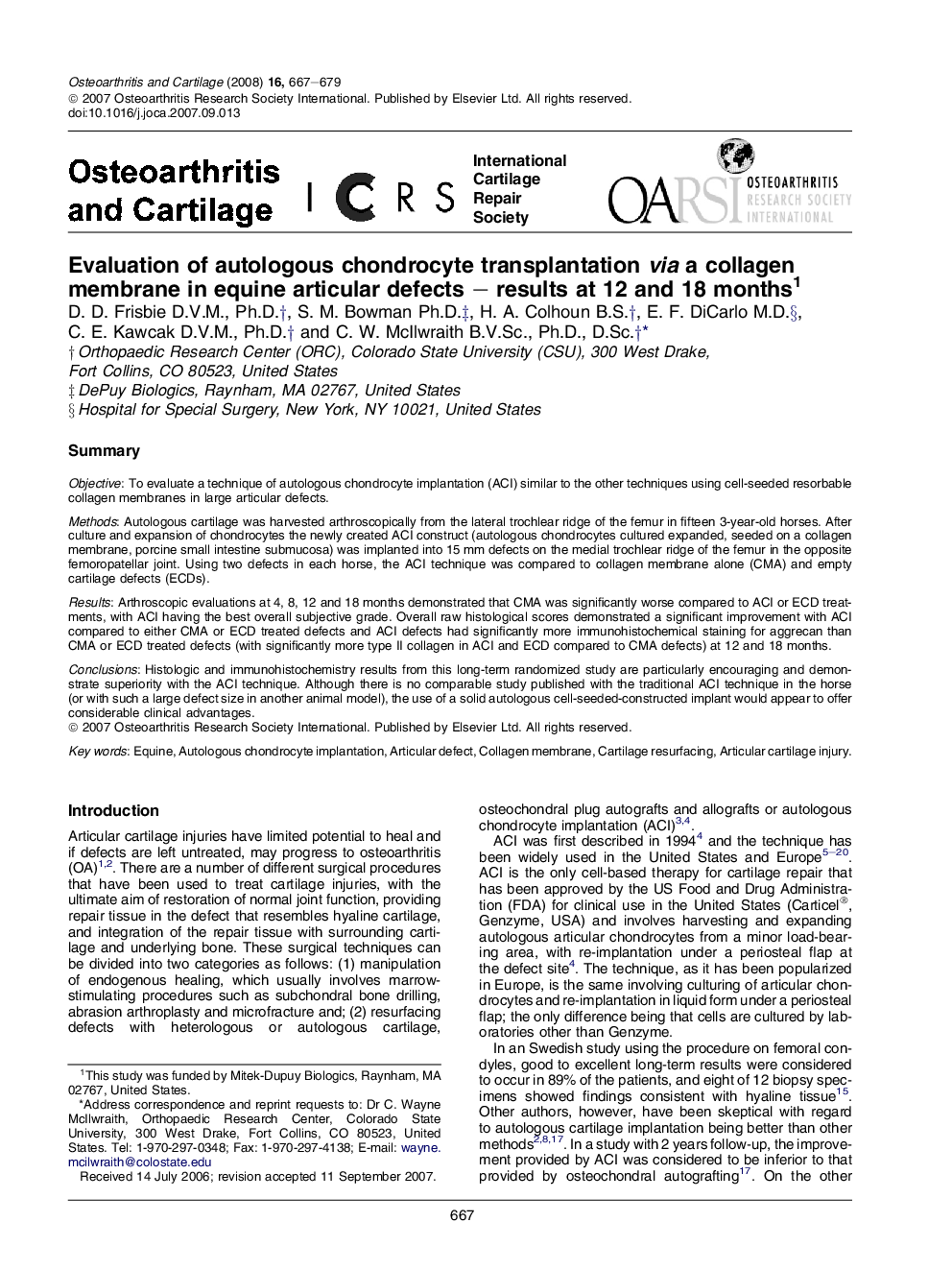| Article ID | Journal | Published Year | Pages | File Type |
|---|---|---|---|---|
| 3381224 | Osteoarthritis and Cartilage | 2008 | 13 Pages |
SummaryObjectiveTo evaluate a technique of autologous chondrocyte implantation (ACI) similar to the other techniques using cell-seeded resorbable collagen membranes in large articular defects.MethodsAutologous cartilage was harvested arthroscopically from the lateral trochlear ridge of the femur in fifteen 3-year-old horses. After culture and expansion of chondrocytes the newly created ACI construct (autologous chondrocytes cultured expanded, seeded on a collagen membrane, porcine small intestine submucosa) was implanted into 15 mm defects on the medial trochlear ridge of the femur in the opposite femoropatellar joint. Using two defects in each horse, the ACI technique was compared to collagen membrane alone (CMA) and empty cartilage defects (ECDs).ResultsArthroscopic evaluations at 4, 8, 12 and 18 months demonstrated that CMA was significantly worse compared to ACI or ECD treatments, with ACI having the best overall subjective grade. Overall raw histological scores demonstrated a significant improvement with ACI compared to either CMA or ECD treated defects and ACI defects had significantly more immunohistochemical staining for aggrecan than CMA or ECD treated defects (with significantly more type II collagen in ACI and ECD compared to CMA defects) at 12 and 18 months.ConclusionsHistologic and immunohistochemistry results from this long-term randomized study are particularly encouraging and demonstrate superiority with the ACI technique. Although there is no comparable study published with the traditional ACI technique in the horse (or with such a large defect size in another animal model), the use of a solid autologous cell-seeded-constructed implant would appear to offer considerable clinical advantages.
